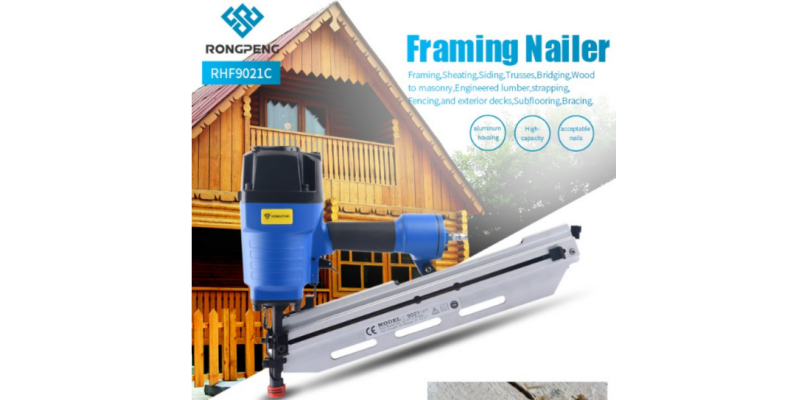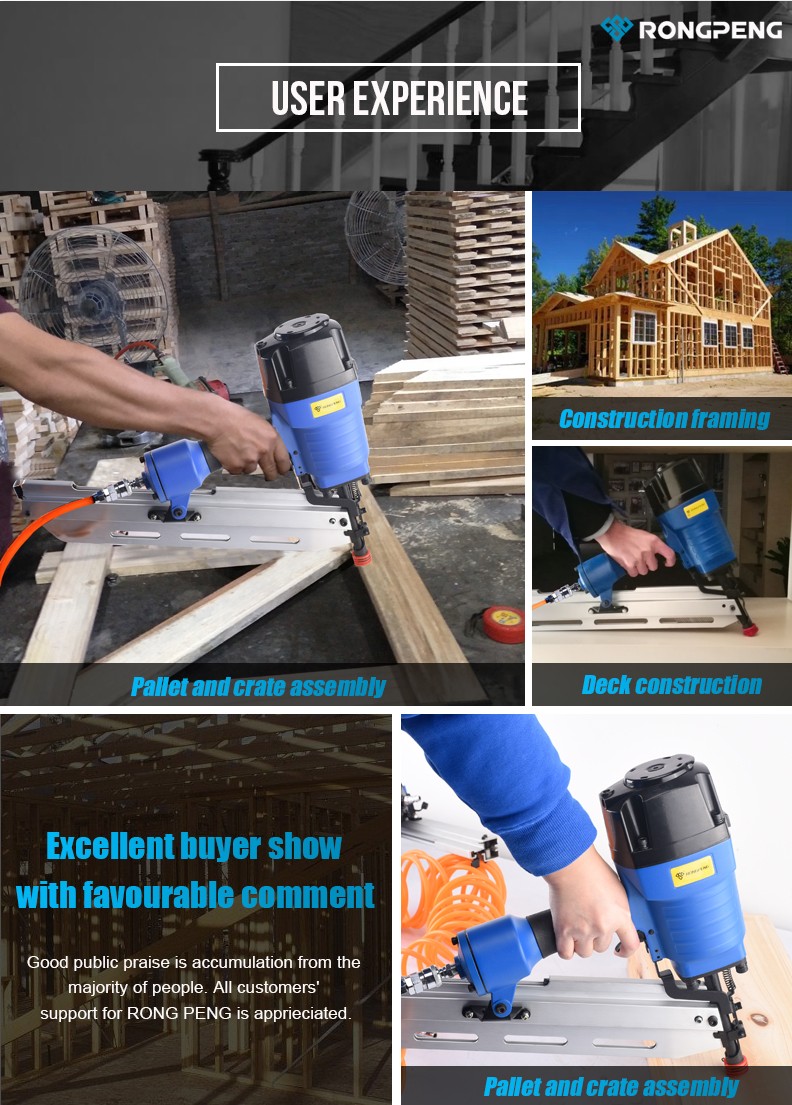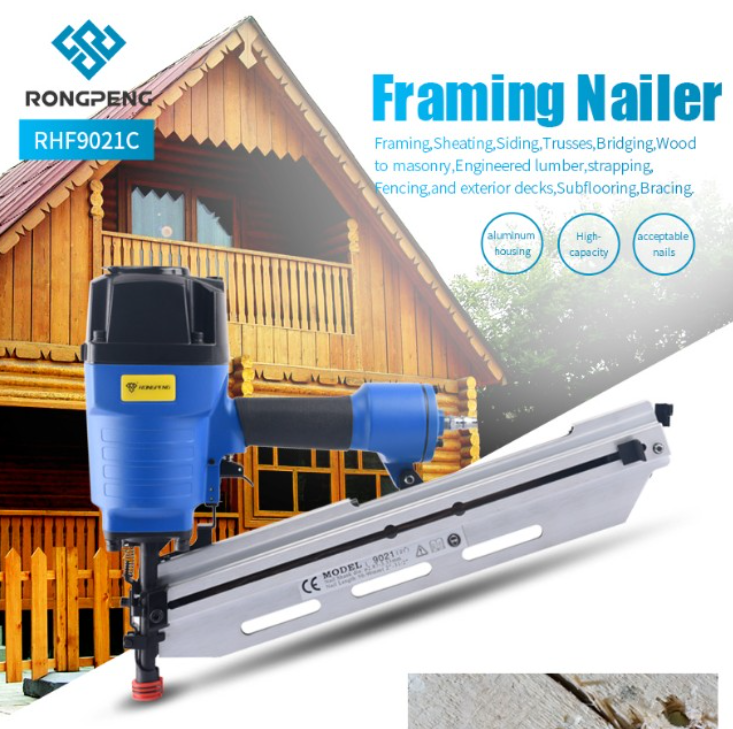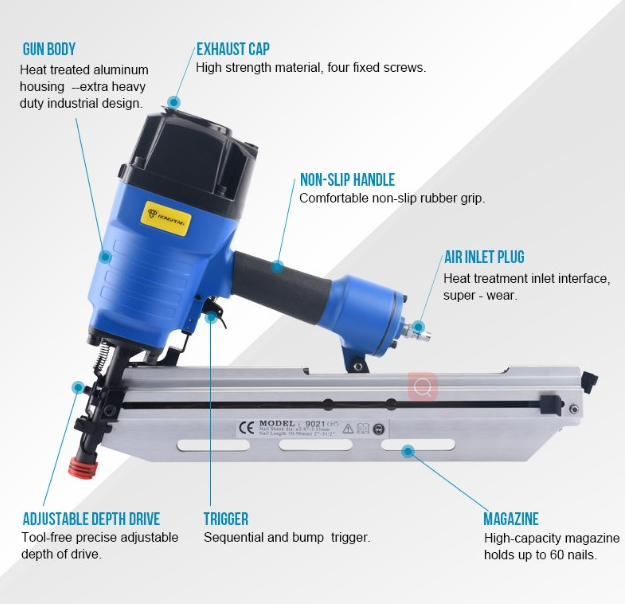

Air nail guns are a staple tool for many construction projects and home renovation tasks. They allow you to quickly drive nails into various materials like wood, concrete, and steel. Air nailers come in two main firing styles: bump fire and sequential fire. Understanding the difference between these two operating mechanisms is important when selecting the right nail gun for your needs.
Bump Firing
Bump firing is a firing method used in air nail guns where the nail is fired when the safety contact is triggered, and the gun is bumped against the work surface. This method is also known as "contact firing" or "bump-and-fire." When the safety contact is triggered, the compressed air is released, propelling the nail out of the gun and into the work surface. The bump-firing method is fast and efficient, allowing you to quickly fire nails in quick succession.
Bump firing is useful in large-scale projects that don't require precise fastener placement. While it's considered a more efficient firing option, as more nails can be fired in a comparatively shorter amount of time, it's also the least safe. Bump firing is ideally used on horizontal, flat surfaces, such as flooring, roofing, decking, and pallet making.
However, bump firing also has some drawbacks. Because the nail is fired when the gun is bumped, there's a higher risk of accidental discharge. If you're not careful, you could end up firing a nail without intending to, which could result in damage to the work surface or even injury. Additionally, bump firing can be more difficult to control, as the nail is fired the moment the safety contact is triggered, leaving less room for error.

Sequential Firing
Sequential firing, on the other hand, is a firing method used in air nail guns where the nail is fired when the trigger is pulled, and the safety contact is not triggered. This method is also known as "pull-and-fire." When the trigger is pulled, the compressed air is released, propelling the nail out of the gun and into the work surface. Sequential firing allows for more control over the nailing process, as you can carefully aim and align the nail gun before firing.
One advantage of sequential firing is that it offers more control over the nailing process. Because you need to pull the trigger to fire the nail, you have more time to aim and align the nail gun, ensuring that the nail is placed exactly where you want it. This makes it ideal for tasks such as framing, where precision is crucial. Additionally, sequential firing is generally safer than bump firing, as you have more control over when the nail is fired. Sequential firing is ideal for production applications like framing, sheathing, decking, and flooring. The rapid fire capability drives nails quickly and efficiently with minimal user fatigue.
However, sequential firing also has some drawbacks. Because you need to more concentration on trigger control, it can be more tiring than bump firing, especially for tasks that require a lot of nails. Additionally, user must actively stabilize gun during use, you need to take the time to carefully aim and align the nail gun before firing.
Choosing the Right Nail Gun Firing Mode
With a clear understanding of the differences, how do you choose the right firing mode for your needs?
Bump firing works best for less precise jobs, repairs, and DIYer who don't sink nails all day.
Sequential firing is ideal for framers, roofers, deck builders, flooring contractors, and other professionals doing repetitive nailing throughout the workday.
It’s important to note only experienced nail gun users should select contact or bump firing modes. If you're worried about being considered a "newb" for choosing a sequential firing gun, don't. Even pros recommend sequential fire over bump firing for safety reasons.

The choice depends on your specific needs. RONGPENG can offer both modes in the same tool providing versatility when required. For example, the RONGPENG RHF9021C framing nailer allows you to switch between sequential and bump fire modes right on the tool. This versatility makes it an excellent choice for a wide range of professional and DIY nailing tasks.
Light weight, heat-treated aluminum housing, extra heavy duty industrial design. One piece drive pin working life is more 0.3 millions times. High strength alum alloy die casting body. Nail head and drive pin have be heat treated by Ipsen which import from Germany. Tool free depth adjust and easy-load magazine can hold up to 2 rows ×30 pcs framing nails.
The round head framing nailer RHF9021C drives strip nails 21 Degree 2"-3-1/4”(50-90mm), it can be widely used for floor and wall framing, truss /window build-up, subflooring and roof-decking, wall-sheathing, mobile home and modular housing construction.

Model No:RHF9021C
Dimension:526×355×132mm(20.7"×13.97"×5.19")
Weight:3.99kg(8.79Ib)
Operating Pressure:80-120psi(5.5-8bar)
Max.pressure:120psi(8.3bar)
Load Capacity:2×30pcs
RONGPENG has quickly risen to become an unrivaled global producer of air-powered devices including air tools, air spray gun, air nailer, airless paint sprayer, and etc.
RONGPENG seeks independent sales agent to represent and market our industry-leading pneumatic tools. We support OEM, ODM, OBM customization, small order quantity is acceptable and samples are available.
Make any cooperation possible. Any services related to the product, inquire with us now! Rongpeng@Rongpeng.Com